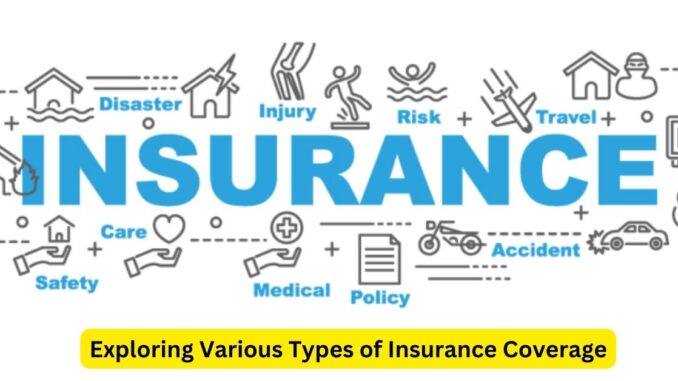
Insurance is a crucial financial tool that provides protection and peace of mind in times of need. It comes in various forms, each tailored to specific risks and needs. In this article, we will explore the different types of insurance coverage available, helping you understand the diverse options to safeguard your financial well-being.
- Health Insurance
Health insurance is perhaps one of the most common forms of coverage. It covers medical expenses, ensuring that policyholders can access necessary healthcare services. Health insurance typically includes coverage for doctor visits, hospital stays, prescription medications, and preventive care. Policies can vary widely, with different types of plans such as Health Maintenance Organizations (HMOs), Preferred Provider Organizations (PPOs), and High Deductible Health Plans (HDHPs) offering different levels of flexibility and cost-sharing.
- Life Insurance
Life insurance provides financial protection for your loved ones in the event of your death. There are several types of life insurance, including:
- Term Life Insurance: This offers coverage for a specified term, typically 10, 20, or 30 years. If the policyholder passes away during the term, the beneficiaries receive a death benefit.
- Whole Life Insurance: This is a permanent life insurance policy that provides coverage for the entire lifetime of the policyholder. It also includes a savings or investment component, known as cash value.
- Universal Life Insurance: Similar to whole life insurance, universal life offers permanent coverage but with more flexibility in premium payments and death benefits.
- Auto Insurance
Auto insurance is mandatory in many places and provides coverage for damages or injuries resulting from car accidents. Common components of auto insurance include:
- Liability Coverage: Pays for damages to others if you’re at fault in an accident.
- Collision Coverage: Covers damage to your own vehicle in a collision.
- Comprehensive Coverage: Protects against non-collision-related damages, such as theft, vandalism, or natural disasters.
- Homeowners or Renters Insurance
Homeowners insurance is essential for homeowners, while renters insurance is designed for tenants. These policies protect against property damage, theft, and liability. They typically cover the structure (for homeowners), personal belongings, and liability for accidents on the property. Additionally, homeowners insurance often includes coverage for additional living expenses if your home becomes uninhabitable due to a covered event.
- Disability Insurance
Disability insurance provides income replacement if you become unable to work due to a disability or injury. It ensures that you can maintain your financial stability during periods of reduced or lost income. There are short-term and long-term disability insurance policies, each offering different coverage durations and benefit levels.
- Business Insurance
Businesses need various insurance types to protect their assets and operations. Common business insurance coverage includes:
- Commercial Property Insurance: Protects against property damage and loss.
- General Liability Insurance: Covers legal claims for bodily injury or property damage.
- Workers’ Compensation Insurance: Provides benefits to employees injured on the job.
- Professional Liability Insurance: Protects professionals against negligence claims.
Conclusion
Insurance coverage comes in various forms, allowing individuals and businesses to safeguard their financial well-being against a wide range of risks. To make the most of insurance, it’s essential to understand your specific needs and carefully select the types of coverage that provide the best protection for your circumstances. Consulting with an insurance professional can help you navigate the complexities of insurance and tailor a coverage plan that suits your requirements.
Leave a Reply